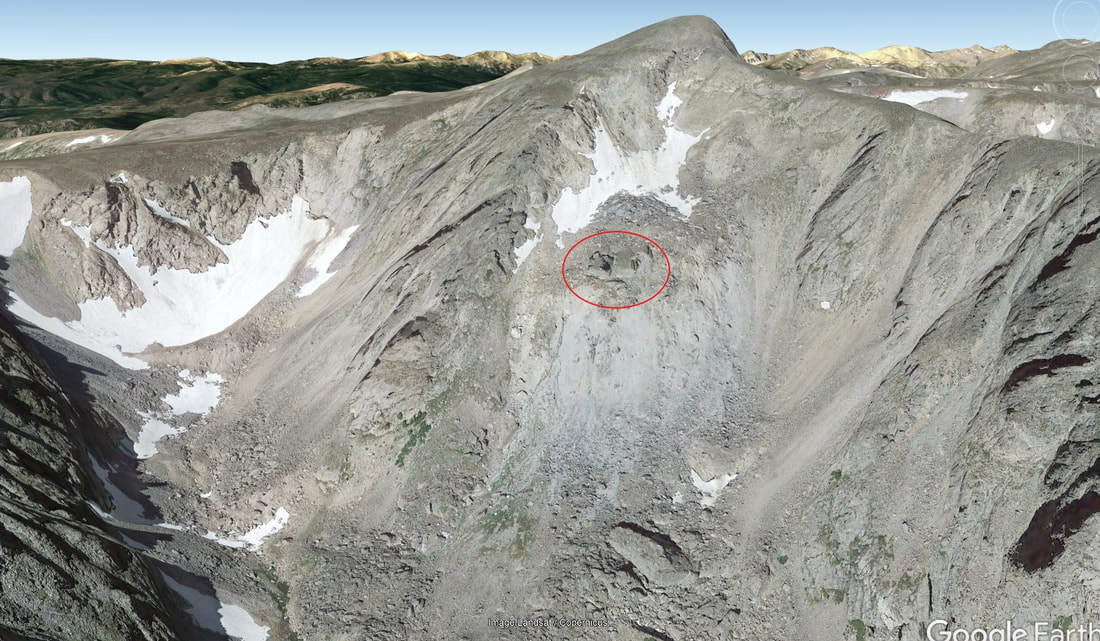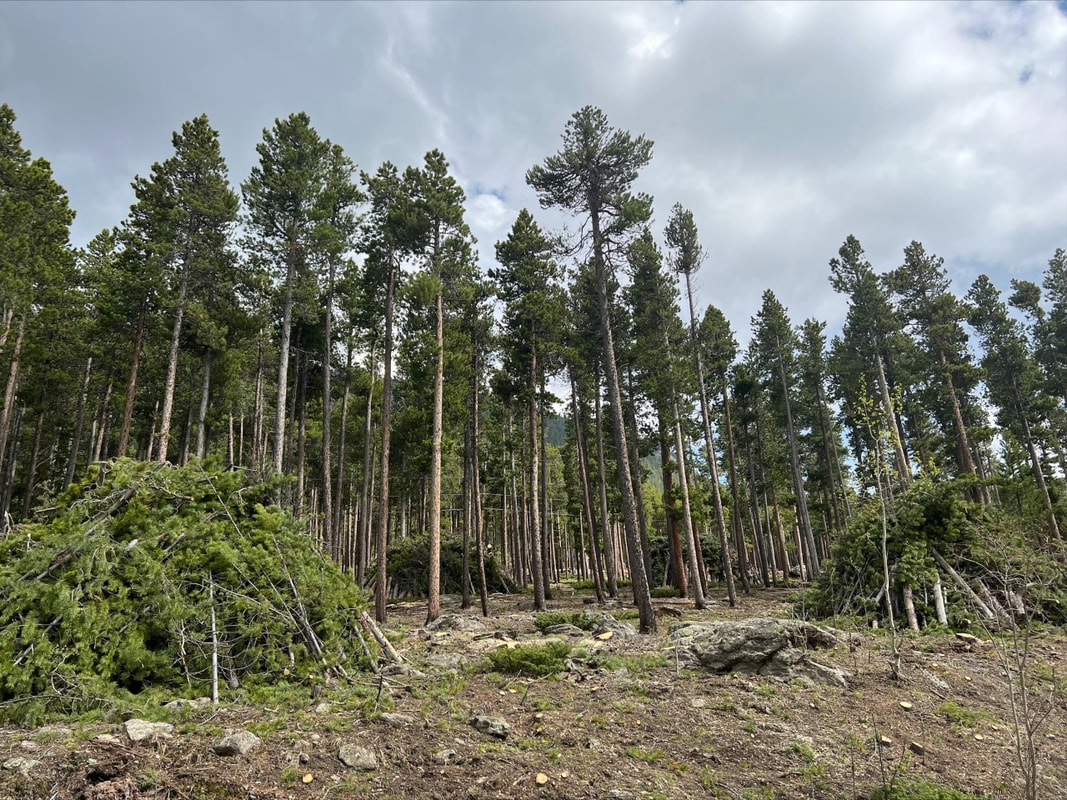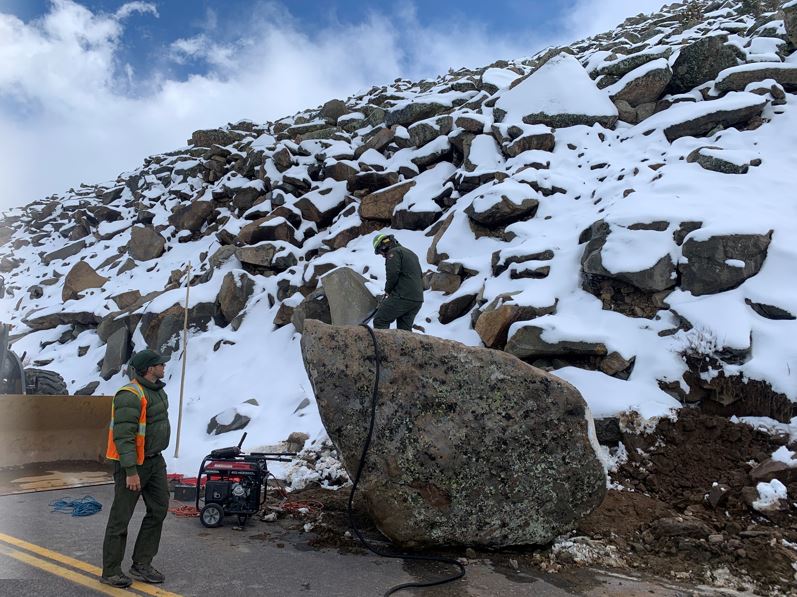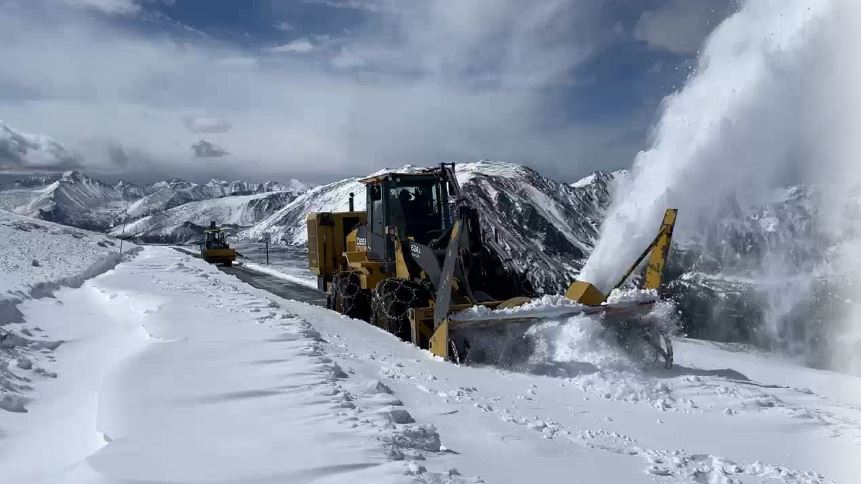|
RMNP UPDATE - June 30, 2022
All areas in Chaos Canyon to the west of Lake Haiyaha are closed in Rocky Mountain National Park to all users due to significant rockfall activity and continuing potential impacts from forecasted precipitation. On June 28, 2022, at approximately 4:30 pm a large rockfall event occurred on the south slope of Hallett Peak, resulting in sliding rock falling into Upper Chaos Canyon. The area of the rockfall event is highly unstable. Additionally, rainstorms are in the forecast for this area through July 3, which may contribute to additional rockfall activity. This closure will remain in effect until the projected rainstorms pass and the slope can be evaluated by National Park Service geologists. The hiking trail to Lake Haiyaha, Lake Haiyaha itself, and hiking trails on the north side of Hallett Peak remain open. The bouldering area in lower Chaos Canyon, on the north and east shore of Lake Haiyaha, will remain open. There have been no reported injuries from Tuesday’s rockfall event and there are no designated hiking trails in the closure area. Chaos Canyon is a popular area for bouldering. The cause of this rockfall event on Hallett Peak remains unknown. Park visitors planning to recreate in rocky terrain areas of the park are reminded to always practice due diligence and use caution. Rocky slopes on and near mountain peaks can be unstable. Recreation users should know their own limits and choose routes that are within the abilities of everyone in their party. For additional information on Rocky Mountain National Park, visit www.nps.gov/romo or call the park’s Information Office at (970) 586-1206.
0 Comments
RMNP UPDATE - June 30, 2022 National Park Service Director Chuck Sams visited Rocky Mountain National Park this week to see how the park is working to tell a more inclusive history and to announce $20 million in Fiscal Year 2022 investments from the Great American Outdoors Act and President Biden’s Bipartisan Infrastructure Law that will increase fire resiliency and upgrade and modernize key park infrastructure needed to support growing visitation. Sams also met with employee groups to hear directly from them on how he can best support them in Washington.
During the visit, Director Sams announced the NPS has awarded a $19.9 million contract funded by the Great American Outdoors Act’s Legacy Restoration Fund to rehabilitate water, wastewater, and electrical distribution systems and improve accessibility, address fire risk, and modernize the Moraine Park Campground. This project will also relocate electric powerlines in the campground underground to reduce system damage caused by snow, wind, falling tree branches, electrical hazards or wildfire and will add electrical hook-ups to approximately 25% of the campsites. Additionally, there will be improvements to the ranger station, entrance kiosk, accessibility and drainage in the campground. He also celebrated a Fiscal Year 2022 investment from the Bipartisan Infrastructure Law for Rocky Mountain National Park. Fuel treatment projects, including at Deer Mountain, will build on the park’s prior fuel reduction work and further reduce the risk of catastrophic fires fueled by climate change. This is part of the $103 million investment announced by the Department for wildfire risk reduction efforts throughout the country. The Director was briefed on the park’s fire management program and saw the impacts of the devastating October 2020 East Troublesome Fire, which fueled by record-high temperatures and drought became the largest fire in Rocky Mountain National Park’s 107-year history and burned over 21,000 acres within the park. Sams heard firsthand how past fuels mitigation projects aided firefighting efforts during the East Troublesome Fire in 2020. Fire fighters were able to use these past projects as anchors to prevent the fire from moving into the surrounding community of Estes Park. Sams visited the west side of the park to see how Rocky Mountain National Park is working with affiliated Tribes to tell a more complete and accurate history and planning for new exhibits for the Kawuneeche Visitor Center. These exhibits, which will directly incorporate Tribal voices, showcase important Indigenous connections, encouraging visitors to the park to see the park not only as a beautiful natural setting but also as a place where Native peoples hold strong historical and contemporary connections. Throughout his two days in the park Sams met with many park staff and volunteers and visited with the interns from the park’s inaugural Diversity Internship Cohort Program. The program is hosting over 20 interns to increase the diversity of NPS staff through development and mentoring of interns within a variety of park workgroups and partners. www.nps.gov Rocky Mountain National Park seeks public input on a proposal to construct new housing on the west side of the park to replace employee housing that was lost in the East Troublesome Fire.
The National Park Service is proposing to construct a new housing complex inside the park that would support 22 seasonal beds. This proposed complex would be located near the existing park housing area on the west side of the park. This new complex would consist of two dormitories, ten residential units, three recreational vehicle sites, and a residential support facility that would include laundry, showers, and a communal kitchen. The NPS would also construct new utilities, replace a water well and associated infrastructure at the existing park housing area, and remove or abandon old utilities infrastructure that was destroyed at the former housing area across from the Green Mountain Trailhead. On October 21, 2020, the East Troublesome Fire made an 18-mile and over 100,000-acre run in Grand County, Colorado. Rocky Mountain National Park lost numerous structures, including 18 historic buildings at the former Green Mountain-Onahu seasonal housing area, 3 RV sites and all associated utilities. The East Troublesome Fire was the largest fire in Rocky Mountain National Park’s 107-year history. It burned over 21,000 acres within the park. This proposed project is critical for recruiting and retaining seasonal staff to work on the west side of the park. These employees work mid-April through mid-October. Seasonal staff provide essential visitor services and carry out critical park operations. These positions include rangers, park guides, fee and campground staff, trail crew members, buildings and utilities staff, and custodians. Visit Proposal to Construct New Housing Destroyed by the East Troublesome Fire - Rocky Mountain National Park (U.S. National Park Service) (nps.gov) for further information. Interested in learning more? Members of the public are invited to join a virtual meeting on Tuesday, July 12, 2022 from 6:00 pm – 7:00 pm MT. Park staff will provide a short presentation and will be available to answer public questions. Advance registration is required. To register, visit: https://swca.zoom.us/webinar/register/WN_mCkNrLxBQhaHy54yUPiXxQ Comments on this proposed project will be accepted beginning July 1 and must be received in writing by close of business on July 31, 2022. Comments can be submitted at the following web address: https://parkplanning.nps.gov/reconstructCRDhousing. Comments may also be submitted via mail to: Rocky Mountain National Park Office of the Superintendent 1000 US Hwy 36 Estes Park, CO 80517 Please be advised, before including your address, phone number, e-mail address, or other personal identifying information in your comment, you should be aware that your entire comment – including your personal identifying information – may be made publicly available at any time. Although you can ask in your comment to withhold your personal identifying information from public review, we cannot guarantee we will be able to do so. For more information on Rocky Mountain National Park, please call the park’s Information Office at (970) 586-1206 or visit our website at www.nps.gov/romo. On Tuesday, June 28, 2022 at approximately 4:30 pm MT a large rockfall event occurred in Rocky Mountain National Park on the south side of Hallet Peak, resulting in sliding rock falling into Upper Chaos Canyon.
Visitors planning to recreate in Upper Chaos Canyon or on the south slopes of Hallet Peak are advised to avoid traveling in the area. It will take some time for the slope to stabilize and there is a significant possibility that additional rockfall may occur at any time. The reduction of hazardous fuels is a significant preventative management tool for managing wildfire near structures and communities. These projects are done to protect life and property and enhance the safety of firefighters and their ability to manage fire within the park.
When fighting the East Troublesome Fire in 2020 and the Fern Lake Fire in 2012, firefighters were able to take advantage of previous and existing prescribed fire and hazardous fuels treatment areas that provided a buffer between the fire and the town of Estes Park. Prior hazard fuels projects were instrumental in stopping the fire from jumping Bear Lake Road and Trail Ridge Road. Hazardous fuels reduction projects take place in strategic locations within Rocky Mountain National Park. The most recent project will take place within the Rocky Mountain National Park boundary near Lily Lake. Work will include removing dead trees, the lower limbs of remaining trees, dead and down logs and ladder fuels which can carry a fire burning in low-growing vegetation to surrounding taller vegetation. Resulting woody materials will be piled on site and burned during winter when conditions allow. Fuels reduction projects cannot be a stand-alone defense against wildfire. It is advisable that additional fuels reduction be completed on private property to meet Firewise mitigation and Hardening Your Home efforts. To learn more about how you can protect your home and help firefighters, please visit: https://www.nfpa.org/Public-Education/Fire-causes-and-risks/Wildfire/Preparing-homes-for-wildfire http://www.readyforwildfire.org/Hardening-Your-Home/ For more information about Rocky Mountain National Park please visit www.nps.gov/romo or call the park’s Information Office at (970) 586-1206. RMNP UPDATE - June 3, 2022 Trail Ridge Road has reopened. Due to ongoing boulder removal work there is one lane of traffic near Rainbow Curve so travelers should expect delays in that area. Due to melting snow on the road and the potential for freezing temperatures visitors should be prepared for icy conditions. Because weather conditions may change rapidly, park visitors should be prepared to adjust travel plans accordingly. A timed entry reservation is required to travel Trail Ridge Road between 9 a.m. and 3 p.m.
RMNP UPDATE - June 1, 2022 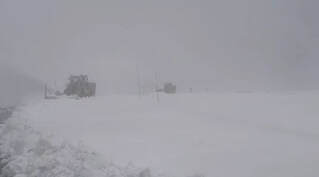 Photo Courtesy Rocky Mountain National Park Photo Courtesy Rocky Mountain National Park Recent winter storms have brought fresh spring snow to the high elevation areas of Rocky Mountain National Park. Rocky's snowplow operators and trail crew have been hard at work to plow and re-open Trail Ridge Road, encountering drifts of 1 to 3 feet. Due to the amount of snow on the road above 10,000 feet and a large boulder that has fallen in the road, Trail Ridge Road is still closed on the east side of the park at Many Parks Curve and on the west side of the park at the Colorado River Trailhead. The road will re-open when it is safe for vehicles. For the most current information on Trail Ridge Road please call the park's recorded phoneline at 970-586-1222 or follow us on Twitter @RockyNPS. |
RMNP UpdatesPress Releases from Rocky Mountain National Park and the Rocky Mountain Conservancy.
Archives
September 2025
|
© Copyright 2025 Barefoot Publications, All Rights Reserved



